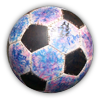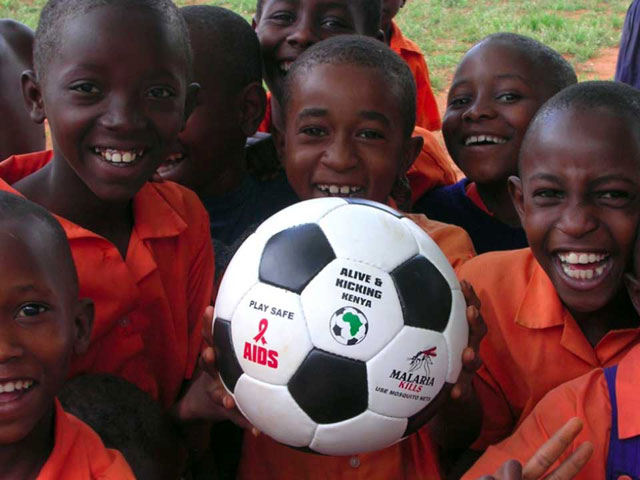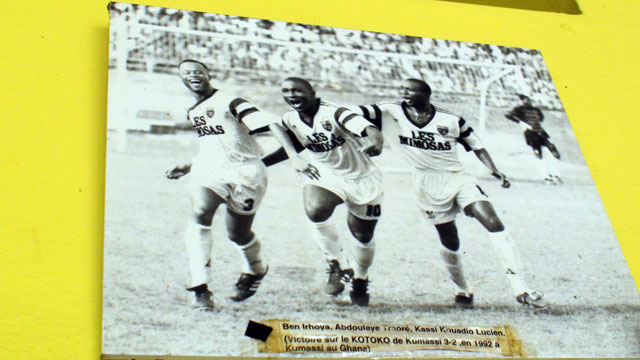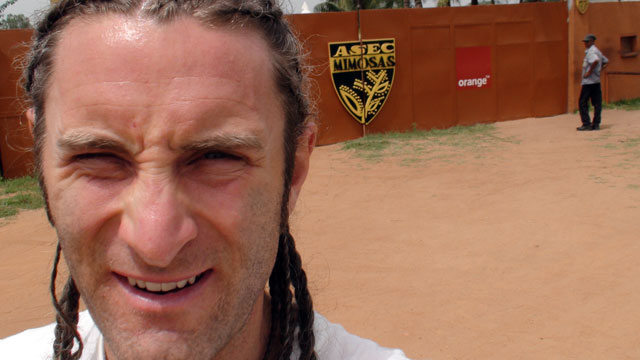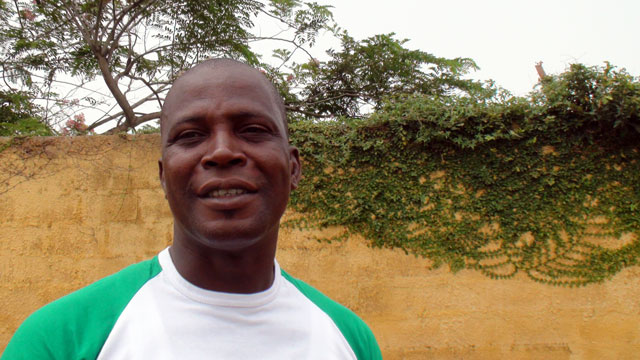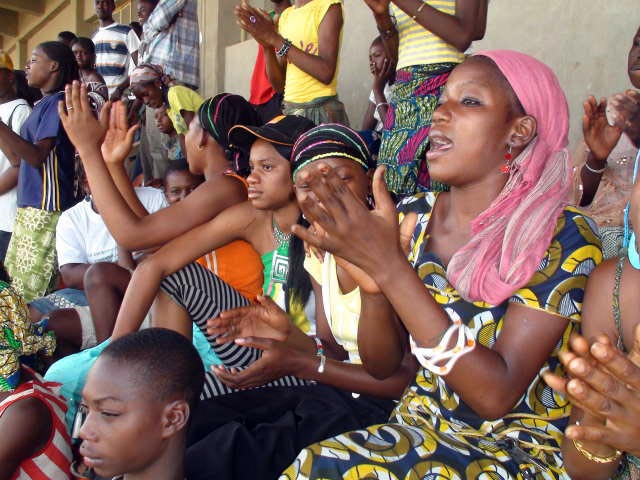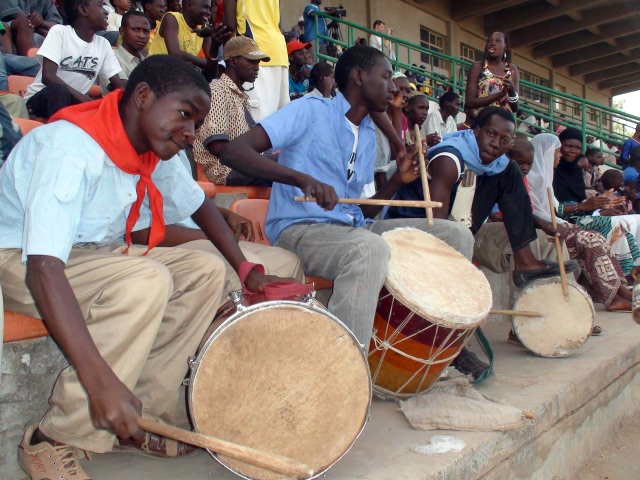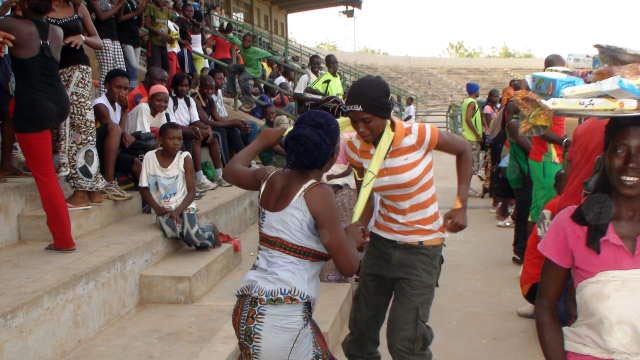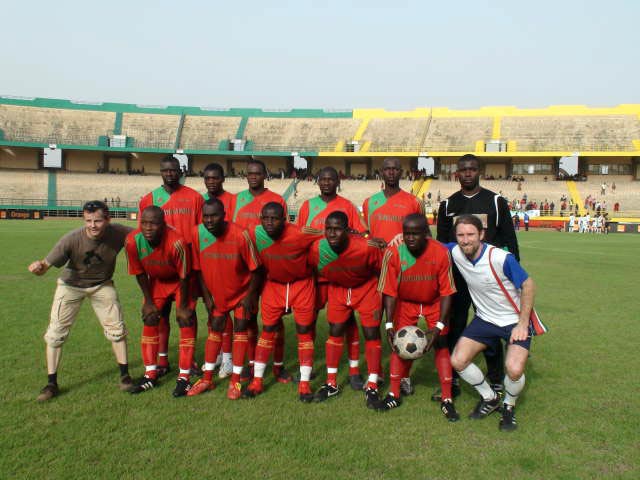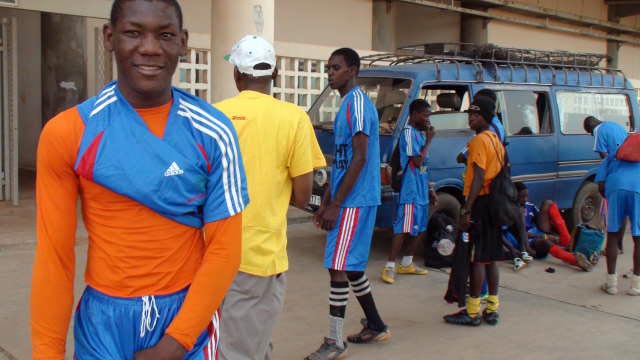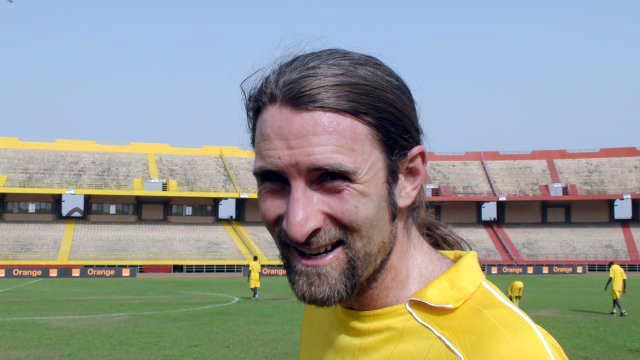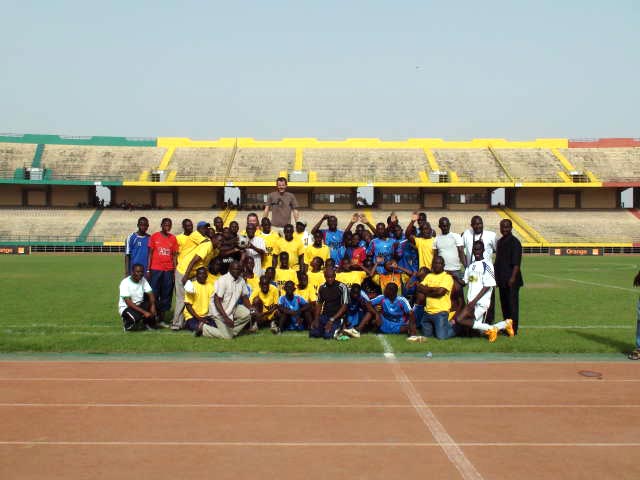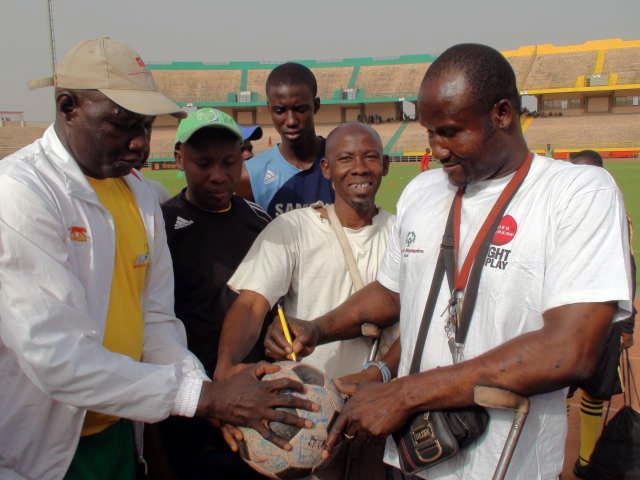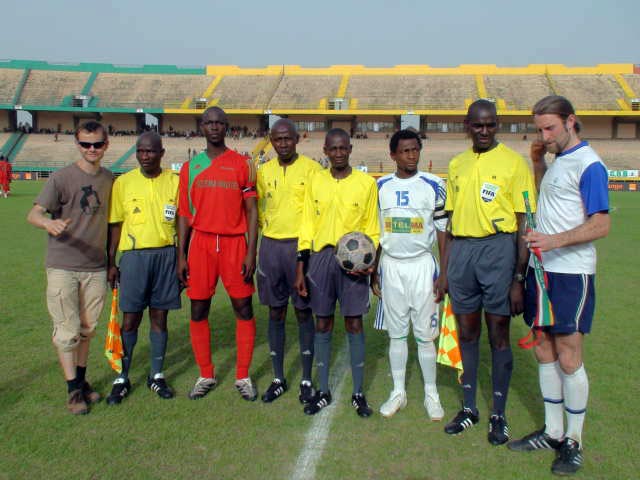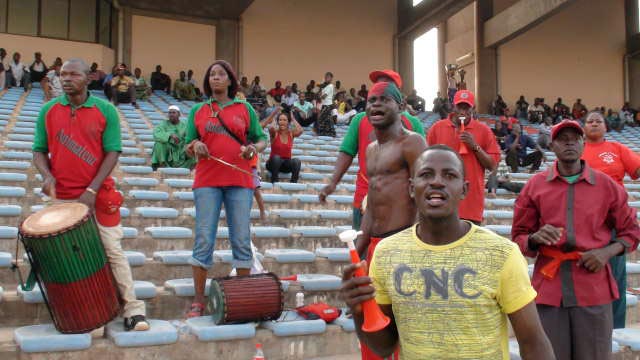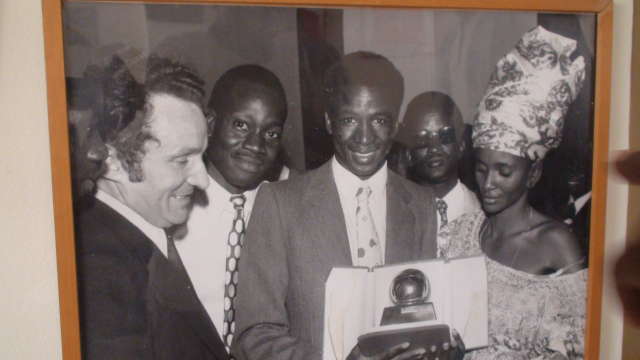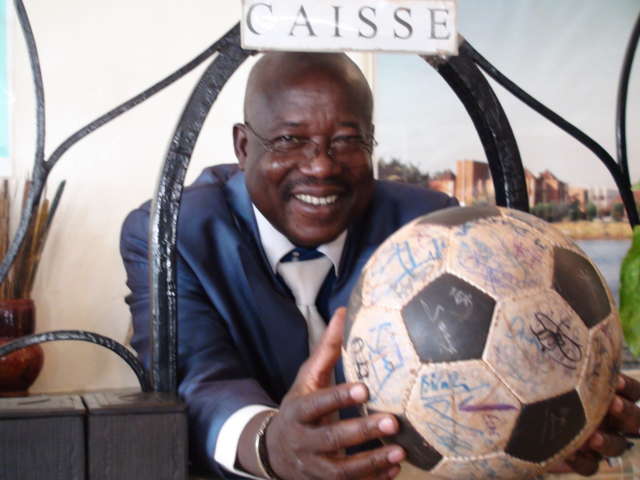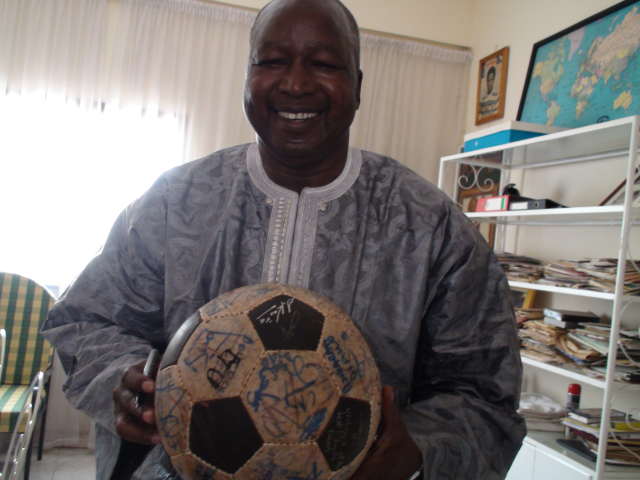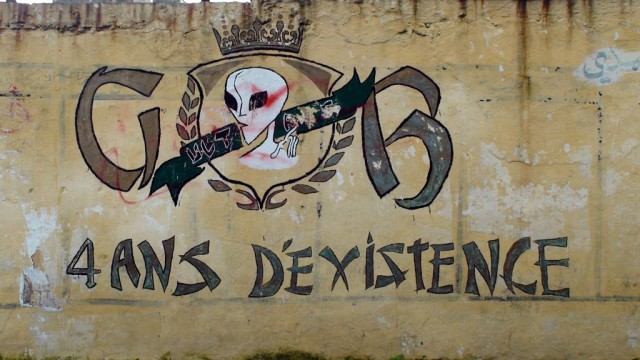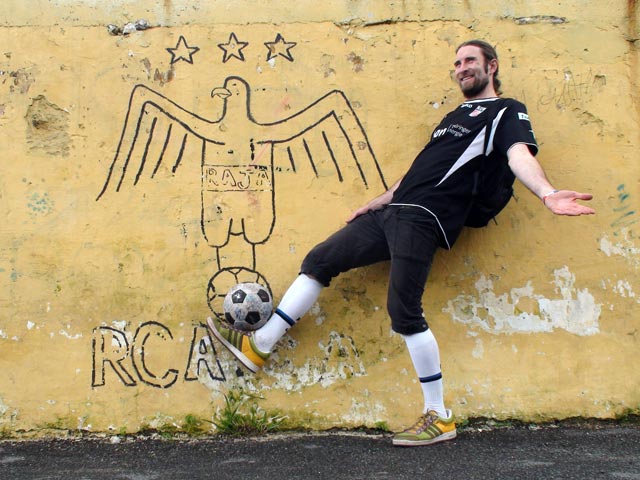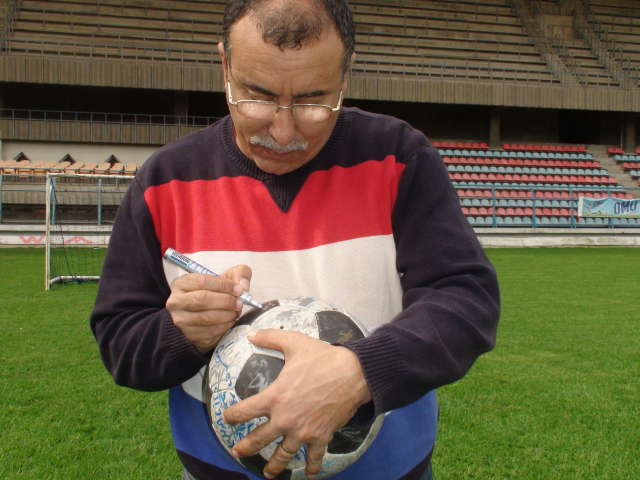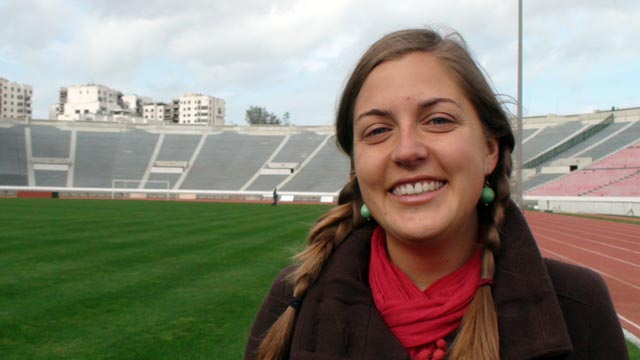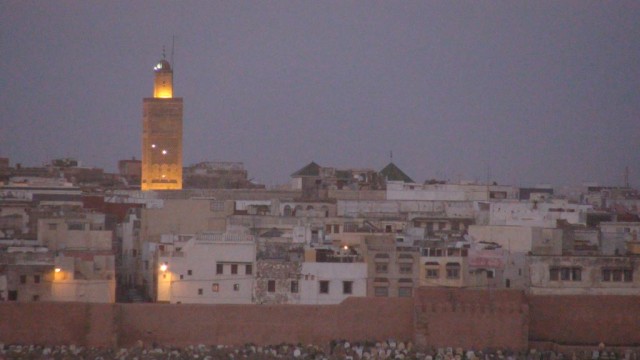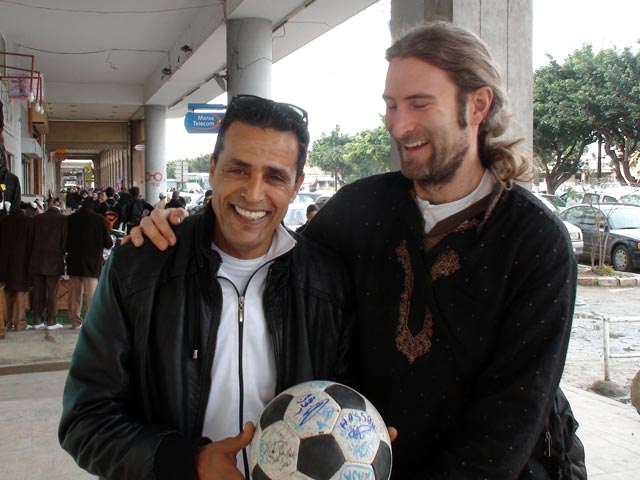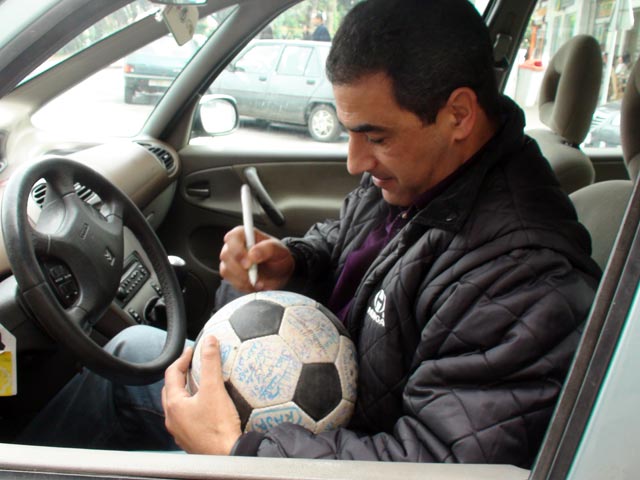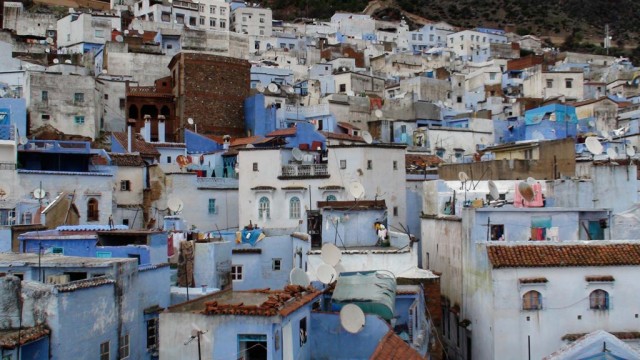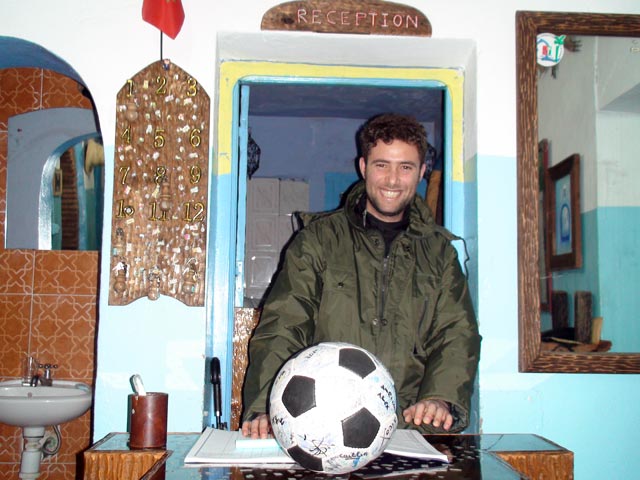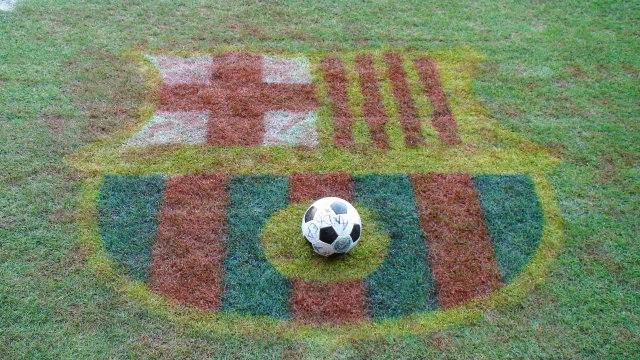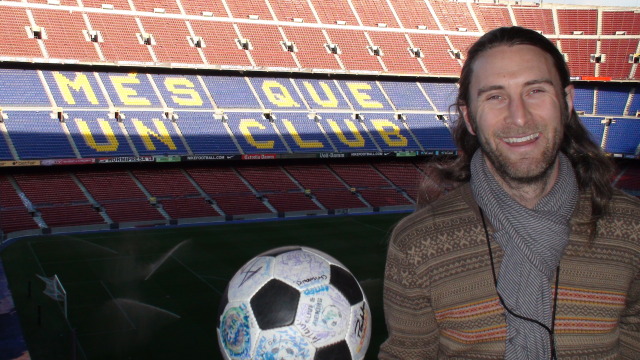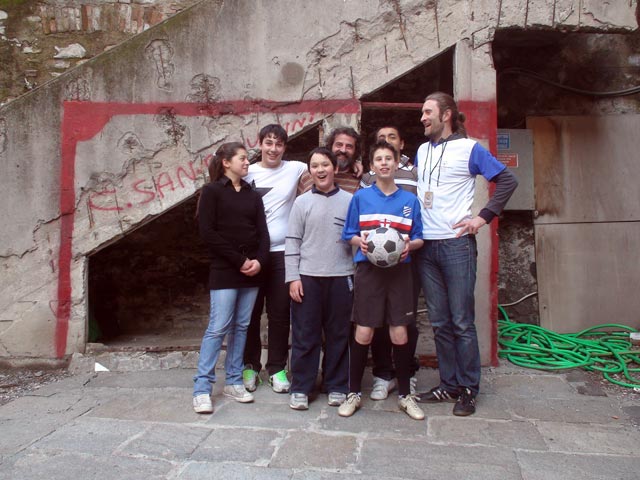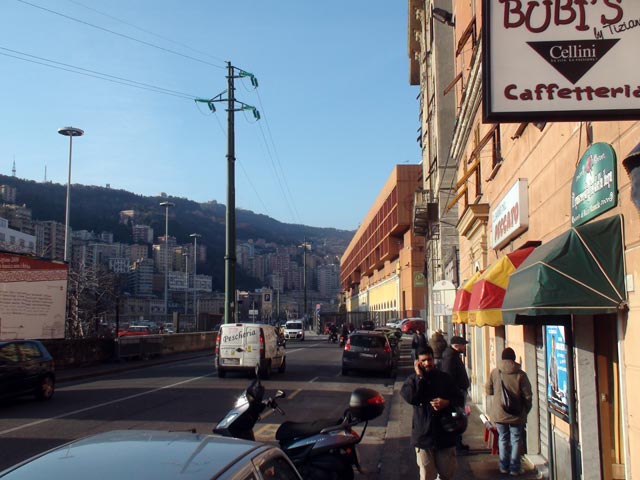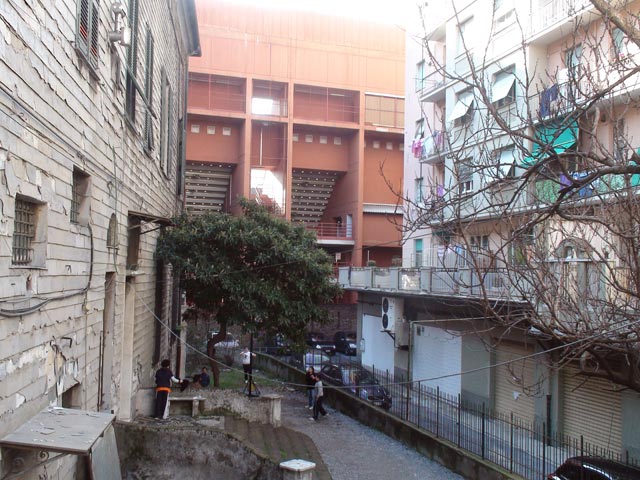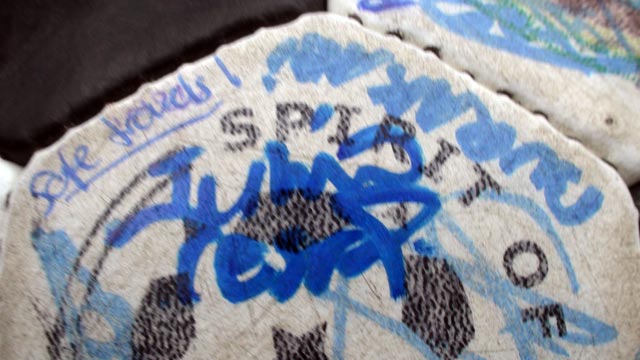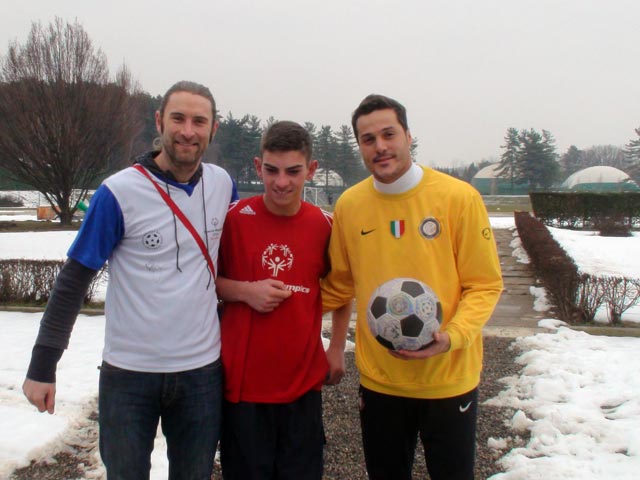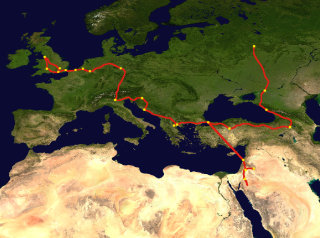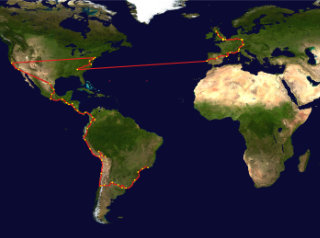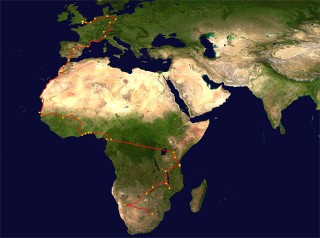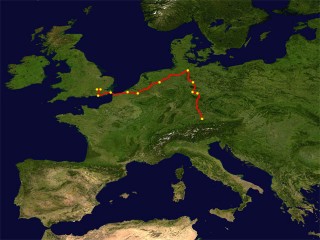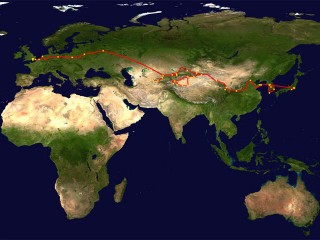My first gig alone is a trip with Special Olympics to visit the famous ASEC Mimosas football academy. Stano Claude, National Director of Special Olympics Côte d’Ivoire — and a supporter of ASEC Mimosas — is only too happy to connect me to his club.
ASEC’s youth academy is world famous and has produced some of the greatest footballing talents of the modern era. The 25 would-be footballers, aged between 12 and 17, are given a thorough education, including classes in maths, history, geography, French, English, and Spanish. They live at the academy in dorms from Monday morning until midday on Saturday and they have two football training sessions a day with expert coaches who teach them how to play beautiful football.
We are given a guided tour of the academy by Benoit You, Director of Marketing and Communication who tells us that “it is very important for the players to go home once a week, because here they are in a paradise but it is very dangerous. When they are here every day it is very different from the reality. They can forget where they come from.” These lucky, talented kids are receiving an excellent education and if they don’t make it as footballers they have a very good chance of succeeding in the game of life.
The club’s first team is the most celebrated and successful in Ivoirian football history and has been utterly dominant in the last 20 years. ASEC’s philosophy is to play the beautiful game with a strong emphasis on passing and to give young players the chance to shine. The average age of the current first team is just 19 years old. The other teams in the professional league are much older (and much more physical) but ASEC is the most successful.
The list of alumni of the ASEC Academy is a testament to the success of this philosophy. It reads like the team sheet of the Ivorian national side as it includes Kolo Touré, Solomon Kalou, Didier Zokora, Yaya Touré, and Emmanuel Eboué — all of whom are now starring in top European clubs like Arsenal and Barcelona. Indeed, ASEC has provided the backbone of the national team for many years.
“We develop them. We give them a chance. This is the philosophy of the club”, says You.
Playing and having fun are part of this philosophy of the football here. If you have have fun on the field you can win games. Try telling that to so many of the aggressive coaches plying their trade around the world. The Ball likes this idea. FUN = Football Unites Nations.
This is the deciding game of the Kayes High School Football Championship. It is Wednesday evening and that means Champions League football. The two teams come running out on to the field wearing replica strips. The yellow team is Arsenal, sponsored by O2. The blue and black stripes, well those are world famous: Inter Milan.
The main stand of Kayes biggest stadium Stade Abdoulaye Maccoro Sisoko is almost full. It is split right down the middle and packed mostly with screaming, singing, cheering teenage girls dancing to the beat of drums and vigorously supporting their own school.
The game is a nail-biter, end-to-end stuff, but 0-0 at half time. In the second half, after a stern talking to from Arsene Wenger at half time, Arsenal step up a gear and dominate, creating half a dozen great chances. Even though half of the players are playing in plastic sandals, the quality of football is superb. The teams can’t be separated and the game goes to penalties.
Inter win on penalities, the Arsenal crumble under the pressure with weak penalties — how typically English. Wild celebrations follow. Inter are the champions of Kayes.
Phil watches the world weather forecast on Matinal, a French TC channel, as we have our breakfast — half a baguette with butter and jam, the Malian standard. “We are in the hottest place in the world again today,” he muses. Driving across Bamako on a Saturday, windows down, Kassoum’s dashboard thermometer indicates 40 degrees. Why the obsession with the heat? We’re heading to the national stadium to play a game of football and we’re anxious, that’s why!
It’s not just any game. This one is with Special Olympics athletes, it is a game of Unified Football where athletes with and without intellectual disabilities play together on mixed teams. Our game is the curtain-raiser to the Malian first division game between FC Djoliba, reigning Malian champions and leaders of the Malian Premier League and visitors FC Duguwolofiila. Unlike the professional game, ours is thankfully only ten minutes each way.
As we arrive at Mali’s national stadium, the Stade de 26 Mars, the Special Olympics athletes are already getting ready to play in the game of Unified Football. Kits are donned and out we go. After 20 minutes of Unified Football in the punishing 45 degree heat, Andrew is coughing and struggling for breath.
The game ends 1-1 and the teams pose for photos, hoping that the game has warmed the hearts of the spectators as much as it has their burning muscles.
As always, people gather round to sign The Ball, whose original inscriptions are now lost beneath the deluge of subsequent signatures.
And so to the main event. The teams come out onto the field. Phil and Andrew are asked to pose for photos with the Djoliba and Duguwolofiila captains, the referees and The Ball. However, the officials seem more worried about Andrew’s horn than they do about Phil’s Edna Everage impression.
We watch some of the game from our seats in the dignitaries area but we can’t resist the calling of the music. We drift away and spend most of the match in the stands with the FC Djoliba musicians.
Music and football — when these two common languages come together, there’s always fun to be had.
“You can’t talk about football in Mali without talking about Salif Keïta”
— Kassoum Keïta (no relation) from DHL Mali.
Salif Keïta is not just famous in his native Mali, he one of Africa’s footballing legends. In 1970, he became African Footballer of the Year, the first person to be awarded the prestigious Ballon d’or Africain.
Keïta, now in his sixties, is the owner and proprietor of the beautiful Mandé Hotel, gloriously situated on the banks of the Niger River in Bamako. We head over there to meet him.
“Please wait while I call through,” says the concierge.
Like so many, Keïta had grown up poor in Bamako, Mali in the 1950s. Football was his escape from poverty playing for AS Real Bamako and Stade Malien. His incredible talents saw him lead Mali, as a teenager, to the most success the nation was ever to have –- second place at the 1972 African Cup. Unfortunately, he picked up an injury and was unable to play in the final.
The Malian government were investing heavily in football. Their thinking went something like this: if we are successful at football, the masses will be content and less likely to fight against us. It has been a ploy used by political leaders across the continent ever since. In Africa, footballing success can be the difference between keeping power and losing it.
Salif Keïta, the young superstar, was Mali’s hottest asset. It didn’t take long for several top European teams to become aware of the shooting star, but he wasn’t allowed to leave the country. Keïta, however, had already made the decision to leave Mali and head for Europe. He escaped Mali overland and made his way to France where he was picked up by St Etienne. His career took him to Olympic Marseille, Valencia in Spain and to Sporting Lisbon. Nicknamed “The Black Pearl of Africa”, Keïta’s goalscoring exploits and outspoken honesty made him a household name in Europe, and a hero across Africa.
A conversation with Salif Keïta
The Ball: What is the “spirit of football”?
Keïta: Football is a game that can help people to live together, to have a partnership and to have a friendship. Everyone watches the World Cup final and everyone is ready to be happy with the team that wins or sad with the team that loses. The spirit of football is perfectly forming people together. In this moment the world has many problems and football can help us to solve some of those problems. The spirit of football is for people to accept others.
What do you think about the state of football in Africa at the moment?
African players are playing in teams in top European leagues… Drogba, Eto’o, Traore, etc. Two days ago I saw Egypt lose to England. They were very unlucky. Senegal beat Greece. Cameroon tied against Italy, and Ivory Coast lost to South Korea. I think that African football is in very good shape. A big problem is money. We don’t have money.
What do you think that so many talented young African players are playing in Europe? Is it a problem for African football?
You cannot pay players in Africa like the Europeans are doing. In sub-Saharan Africa we cannot afford to pay the players. If we had the money then maybe they will stay. But you cannot blame young players going to Europe. You cannot stop them.
What are the chances of an Afrian team winning the World Cup?
It will be difficult but it is not impossible. If it happens, nobody can be surprised.
Could Ivory Coast win with Guus Hiddink as the coach?
Maybe he can do something. But he is not playing! (laughter) They are down in confidence. Hiddink can give them some advice. If the players are not right in their own heads then it is difficult. After they lost the African Cup and they lost to South Korea they are very low in confidence.
Nigeria was a big surprise in the African Nations Cup. Everyone said after Egypt beat Nigeria that Nigeria was finished, but they went on to make the semi-finals. They are a good team. I think Cameroon, even thought they are not like they were 10 years ago, can go very far. Ivory Coast, Ghana, even Algeria — they are all good teams. And South Africa are young and they could surprise, they are at home. You never know in football.
Are you going to be in South Africa?
I am invited to go to South Africa but I prefer to watch the games on TV. A while ago, when I was watching France–Ireland, I saw exactly what happened with Thierry Henry’s goal. People in the stadium had no idea. They were too far away. You can’t see this in the stadium. It is too fast live and you are too far away and there are no replays. I like to watch football on TV.
What do you think about the Henry incident? Is Theirry Henry a cheat?
What happened with Henry could happen with any player. It is a reflex. Immediately, he had to do it because he wanted to win. He saw the ball in the net and he was happy. After the match, he went home and everybody said that he used his hand. No, when you are playing you want to win.
You supported a project about cleaning up Bamako. Cleaning up the streets which are full of trash. You did this by using football as a lure to make young people aware of their civic duties.
It is difficult here because you do not have the possibility to continue to do things because there is not enough money. Often projects are a once-off. For success you need to put people to work and talk to them. It can last for a few months or a year. It is not easy. You need to change the mentality. This can only be done through education. When I was young we used to clean the streets every Monday. Everyone would join in. But now, they do not even think about this. And you cannot do it by yourself. People need to understand the problems and the consequences of their actions.
Last week in Dakar, we met Bashir, a Senegalese man who had returned to Senegal after Senegal beat France in the opening match of the 2002 World Cup. He got on the first flight home and didn’t return to the USA. You hear about the exodus of people leaving Africa. But on this journey so far we have met people who have chosen to come back to Africa. Who are investing their skills in Africa. What do you think about the phonomenon of Africans coming back home?
Many Africans are coming back to share their experiences. I think the leaders of Africa need to utilise this, like China and India have done. But Africa doesn’t do a good job with this. When these people come back they have difficulties. But they are coming back to share their experiences. African government doesn’t understand this.
In “Casa”, you can’t help but realise the significant role football plays in Casablancan life. The colours one chooses to wear on the streets need to be carefully thought through.
Red for Wydad — green for Raja.
Wydad was founded in 1937. Raja a few years later by one of the members of Wydad in a break away. Legend has it that he told Wydad officials: “this team is going to bother you for the rest of your life.”
He was right.
“We at Wydad call Raja our sons”, said former Wydad and Moroccan football legend (89 caps for Morocco) Abdelmajid Shaita.
“Could you imagine having played for Raja?”, Andrew asked.
“I cannot bear to even say the name of that club.”
These days you see players transferring from one club to a bitter rival. Michael Owen recently signed for Manchester United after being a Liverpool star, for example.
“Could that happen in Casablanca?”
“No, not here. It would be impossible. The public would not accept this.”
Abdelmajid spoke about a fantastic player that Wydad had several years ago. He didn’t get along with the coach. He wanted to quit. Fans confonted him after hearing a rumour that he might go to Raja. They swore to him: “if you ever play for Raja, we will kill you.” He retired. No one has ever made that change. The fans and the administrators like it that way.
The stadium is shared. One weekend Raja plays at home, the next Wydad. There are two sides to the stadium: the side with the red seats for Wydad; the side with the green seats for Raja. Fans generally refuse to sit in a section where the seats are in the rival colour. But, if they must, the tendency is to vandalise the other team’s seats. Thus as Andrew stood in the middle to the field and swivelled around, he saw that hundereds of seats were missing – red seats, Wydad seats.
“Who played at home last?”
“Raja played there on Saturday.”
It made perfect sense.
“Both sets of fans were as bad as each other.”
Fulbright scholar and women’s football expert Nicole Matuska verifies the story. She witnessed Raja fans rampaging through her neighbourhood of Casablanca, which is within earshot of the Stade Mohamed V stadium, where up to 75,000 cram in to see fixtures between the two teams. From her second floor apartment, she poked her head out the window to see cars on the street below having their windows smashed and rear-view mirrors broken.
Every home game Raja fans make a pilgrimage of up to four hours to get back to their neighbourhoods. Raja fans, preodinantly poor and working class, are notorious for damaging property en route before and after matches. Zaki, Wydad’s Technical Director, said that the city of Casablanca and the Moroccan FA banned the playing of Wydad–Raja derby matches in Casablanca for several years. The fixtures were instead played in cities up to 300km away. The ban was eventually lifted, but the damage to the economy that these games cause has increased the likelihood of a new super-stadium being constructed on the outskirts of Casablanca.
It was even suggested that the King of Morocco has been known to call both clubs before a derby game and demand that the game be played out in a draw. When the king calls, it is done. Or so they say.
We are sitting across the road from the medina entrance in the rather souless modern centre of Rabat, sipping strong double expressos and checking email, having been attracted by the “Gratis Wifi” sign out front.
Andrew strikes up a conversation with his neighbour.
“Do you like football?”, he asks. The man certainly looks like a footballer, dressed as he is from top to toe in sports apparel.
“Everyone in Morocco likes football”, comes the reply.
It turns out that Hassan’s life revolves around football. Not only was he a professional footballer, but he was a former national team player. Now he’s a goalkeeping coach for the Real Madrid Academy, based in Rabat.
The next thing we know he’s on the phone to his friend — coach and famous Moroccan football commentator, Hicham Jdran. Jdran is in a hurry. He has to get to a game where he will provide the expert analysis for Morocco TV1. He signs The Ball in his car at the stop lights, gives us the thumbs up and is off.
The Ball seems to magically draw people into its orbit. We don’t know how this happens, but we like it.
Hotel Barcelona, one would assume, in a football-mad town like Chefchaouen, might have some football connection. It does.
Mohammed, the hotel manager loves his football. His eyes lit up when he saw The Ball.
“You must be a Barcelona fan,” I suggested, looking at the poster of FC Barcelona on the wall.
“No. No. No,” came the reply. And promptly off came his djelleba to reveal a Real Madrid sweater. “I am Real Madrid.”
“How can you work at Hotel Barcelona?”
“My dream is to work at Hotel Madrid,” he smiled.
“Barca is not just a club, it is more than a club”, remarked our guide. His mother is Barca. His father is Barca. He is Barca. He has the honour and pleasure of being able to work for this great club. He is proud to be Barca.
The Camp Nou is not just any stadium, with a capacity of 98,000 it is Europe’s biggest. Fans flock from everywhere to pay their entrance fees and have their photos taken from the stands but very, very few are allowed to set foot on the field of play. At 10am a call was made to the press liason officer of FC Barcelona. The Ball wanted to visit the Camp Nou. Was it possible?
We turned up at 4pm at Barca TV. Minutes later we were out in the middle, next to the hallowed turf. Memories of the final minutes of the European Cup final in 1999 came flooding back — when Manchester United, in one of the all time great climaxes of the Champions League, defeated Bayern Munich with two extra time goals.
As we drive away from Barcelona, Christian smiles: “We are in Spain. We just walked out onto the turf at the Nou Camp.” Not everyone gets to step out onto the hallowed Camp Nou turf. Thanks to The Ball and the generosity of FC Barcelona, we were able to.
Given that we celebrate the origins of football and how the rules and the game have spread around the world, a visit to Genoa CFC, arguably Italy’s first football club, made good sense. A bit of googling revealed, however, that the Piazza d’Armi (where the club first played) no longer exists and is now occupied by railway sidings.
So, what to do? Give up on Genoa and head to France? Following up on our experience at Andelecht, where we also had no response to our email but received red carpert treatment, we decided to go to Genoa and see what would happen.
Before we knew it, we arrived at the former World Cup stadium shared by Genoa and Sampdoria. An amazing theatre surrounded on all sides by thriving city. Dribbling The Ball around the stadium we saw a sign saying “Centro Socio Educativo S. G. Battista” and a group of kids playing basketball right in the shadow of the stadium.
A game of football seemed like a good idea. The Ball was introduced and football was played. Boys girls, young, old… street football at its finest. A sunny winters day, a red goal painted on an old brick wall, the Stadio Luigi Ferraris as a stunning backdrop… this is what The Ball is all about…
From street to stadium, a celebration of the beautiful game.
We had to get to Inter’s training ground out of town at Appiano Gentile by 10am. It’s supposed to be a half hour drive. “Easy,” we thought. We left at 9am, thinking we were giving ourselves plenty of time. 30 minutes later we had arrived back at our point of departure, having been led a merry dance by Milan’s chaotic road network.
The fog, congested roads and our poor navigating left us battling the clock. Panic began to set in. Nasty words were exchanged between driver and navigator. But somehow, almost miraculously, we found the right road and made it, just about on time, to the photo-shoot.
We drove past the paparazzi waiting at the high-security front gate and were escorted out back, just outside of the players’ area right before practice. We were told that it would be Brazil’s number one goalkeeper Julio Cesar, who would be joining us.
“He is 100% for the World Cup”, said Andrea Butti from Inter. “That is why we thought he would be the right man.” A true gentleman, he signed The Ball and headed it on its way.
Special Olympics was represented by athlete Matteo, who gave The Ball a big kick southwards, and whose signature on The Ball means a great deal to us — two stars kicking and signing The Ball in one day is a rare event.
